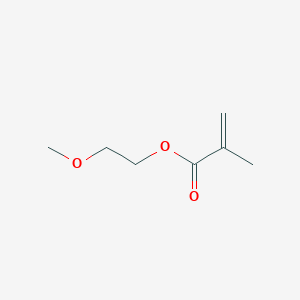-
Categories
-
Pharmaceutical Intermediates
-
Active Pharmaceutical Ingredients
-
Food Additives
- Industrial Coatings
- Agrochemicals
- Dyes and Pigments
- Surfactant
- Flavors and Fragrances
- Chemical Reagents
- Catalyst and Auxiliary
- Natural Products
- Inorganic Chemistry
-
Organic Chemistry
-
Biochemical Engineering
- Analytical Chemistry
- Cosmetic Ingredient
-
Pharmaceutical Intermediates
Promotion
ECHEMI Mall
Wholesale
Weekly Price
Exhibition
News
-
Trade Service
[ Focus on Chemical Machinery and Equipment Network ] In modern industrial production, especially in automated production processes, sensors are almost always safe.
Specifically, industrial producers need to use various sensors to monitor and control various parameters in the production process, so that the equipment is in a normal state, and failures can be discovered in time.
Chemical machinery equipment network hotspots focus on chemical machinery equipment sensorsSpecifically, industrial producers need to use various sensors to monitor and control various parameters in the production process, so that the equipment is in a normal state, and failures can be discovered in time.
One, photoelectric sensor
The photoelectric sensor is a device that converts light signals into electrical signals.
Its working principle is based on the photoelectric effect.
The photoelectric effect means that when light is irradiated on some material, the electrons of the material absorb the energy of the photon and the corresponding electric effect occurs.
According to the different phenomena of photoelectric effect, the photoelectric effect is divided into three categories: external photoelectric effect, internal photoelectric effect and photovoltaic response.
Photoelectric devices include phototubes, photomultiplier tubes, photoresistors, photodiodes, phototransistors, photocells, etc.
Its working principle is based on the photoelectric effect.
The photoelectric effect means that when light is irradiated on some material, the electrons of the material absorb the energy of the photon and the corresponding electric effect occurs.
According to the different phenomena of photoelectric effect, the photoelectric effect is divided into three categories: external photoelectric effect, internal photoelectric effect and photovoltaic response.
Photoelectric devices include phototubes, photomultiplier tubes, photoresistors, photodiodes, phototransistors, photocells, etc.
The photoelectric sensor has the characteristics of high resolution, short response time, long detection distance, and less restriction on detection objects.
In particular, it is worth mentioning that it can realize color discrimination.
The reflectance and absorptivity of the light formed by the detection object differ according to the combination of the wavelength of the light projected and the color of the detection object.
Using this property, the color of the detected object can be detected.
In particular, it is worth mentioning that it can realize color discrimination.
The reflectance and absorptivity of the light formed by the detection object differ according to the combination of the wavelength of the light projected and the color of the detection object.
Using this property, the color of the detected object can be detected.
Two, proximity sensor
The proximity sensor can perform non-contact sensing detection, so it will not wear and damage the detection object, and there is no spark or noise.
Since it is a non-contact output mode, it has a long service life and hardly has any influence on the service life of the contact.
The proximity sensor is different from other detection methods in that it is suitable and used in a water and oil environment, and it is hardly affected by the stains and water and oil of the detection object.
Since it is a non-contact output mode, it has a long service life and hardly has any influence on the service life of the contact.
The proximity sensor is different from other detection methods in that it is suitable and used in a water and oil environment, and it is hardly affected by the stains and water and oil of the detection object.
Among them, the proximity sensor itself can only detect metal objects at close range and without contact.
The big feature of the variable-range elastic rod device is that it can overload the sensing range of the contact.
Spring-loaded pistons, probes, and buttons are generally used to contact the product and then detect whether the product is in place, accurate positioning, and verify the product being tested.
The big feature of the variable-range elastic rod device is that it can overload the sensing range of the contact.
Spring-loaded pistons, probes, and buttons are generally used to contact the product and then detect whether the product is in place, accurate positioning, and verify the product being tested.
Three, optical fiber sensor
The use of optical fiber to develop optical fiber sensors began in 1977.
This technology aroused people's *interests as soon as it came out.
At present, optical fiber sensors have been developed rapidly.
Because the optical fiber itself is a dielectric, and the sensitive components can also be made of dielectric materials, the optical fiber sensor has good electrical insulation, and the surface of the optical fiber can withstand a voltage of 80kV/20cm, which is especially suitable for high-voltage power supply systems and large-capacity motors.
This technology aroused people's *interests as soon as it came out.
At present, optical fiber sensors have been developed rapidly.
Because the optical fiber itself is a dielectric, and the sensitive components can also be made of dielectric materials, the optical fiber sensor has good electrical insulation, and the surface of the optical fiber can withstand a voltage of 80kV/20cm, which is especially suitable for high-voltage power supply systems and large-capacity motors.
The use of optical fibers can form a wide range of sensors, so some people call optical fiber sensors *sensors.
It can measure many physical quantities, and its application range covers military, commercial, civil, medical, industrial control and other fields.
One thing to be clear is that traditional sensors are based on electromechanical measurements, while fiber optic sensors are based on optical measurements .
Optical measurement It can measure many physical quantities, and its application range covers military, commercial, civil, medical, industrial control and other fields.
One thing to be clear is that traditional sensors are based on electromechanical measurements, while fiber optic sensors are based on optical measurements .
Four, displacement sensor
The displacement sensor is a device that converts the movement displacement of an object into a measurable electrical quantity.
It is usually used to convert physical quantities such as deformation, vibration, displacement, position, and size that are not convenient for quantitative detection and processing into electrical quantities that are easy for quantitative detection and convenient for information transmission and processing.
It is usually used to convert physical quantities such as deformation, vibration, displacement, position, and size that are not convenient for quantitative detection and processing into electrical quantities that are easy for quantitative detection and convenient for information transmission and processing.
There are many types of displacement sensors.
In recent years, the application fields have been expanding, and more and more innovative technologies have begun to be applied to the sensors.
For example, based on fiber optic technology, time grid technology, OEM's LVDT technology, ultrasonic technology, magnetostrictive technology, etc.
, due to technological advances, the performance of various sensors has been greatly improved, and the cost has also been significantly reduced.
In recent years, the application fields have been expanding, and more and more innovative technologies have begun to be applied to the sensors.
For example, based on fiber optic technology, time grid technology, OEM's LVDT technology, ultrasonic technology, magnetostrictive technology, etc.
, due to technological advances, the performance of various sensors has been greatly improved, and the cost has also been significantly reduced.
Five, Hall effect sensor
Rotating Hall-effect sensors generally do not use any moving parts.
This semiconductor-based sensor combines Hall-effect sensing elements with circuits to provide analog output signals corresponding to changes in the rotating magnetic field.
There are two output options to choose from, namely analog or pulse width modulation (PWM).
This semiconductor-based sensor combines Hall-effect sensing elements with circuits to provide analog output signals corresponding to changes in the rotating magnetic field.
There are two output options to choose from, namely analog or pulse width modulation (PWM).
Among them, the linear Hall-effect sensor measures the linear movement of the magnetic field instead of rotation.
It is reported that the sensor can be programmed for a set output voltage, which is proportional to a given travel distance.
Up to now, the related technology of Hall sensor is still in the process of continuous improvement, and programmable Hall sensor, smart Hall element and miniature Hall sensor will have good market prospects.
It is reported that the sensor can be programmed for a set output voltage, which is proportional to a given travel distance.
Up to now, the related technology of Hall sensor is still in the process of continuous improvement, and programmable Hall sensor, smart Hall element and miniature Hall sensor will have good market prospects.
to sum up:
In the next few years, with the acceleration of smart manufacturing, the market demand for smart sensing, monitoring, production, monitoring systems, technologies, and equipment is expected to further rise.
Among them, in common automotive electronics, communication electronics, consumer electronics, and *electronic equipment, different types of sensors will be equipped.
In order to better meet customer needs, the company will also devote itself to developing more high-quality new sensor products.
Among them, in common automotive electronics, communication electronics, consumer electronics, and *electronic equipment, different types of sensors will be equipped.
In order to better meet customer needs, the company will also devote itself to developing more high-quality new sensor products.
Original title: Sorting out five sensor types commonly used in industrial automation







